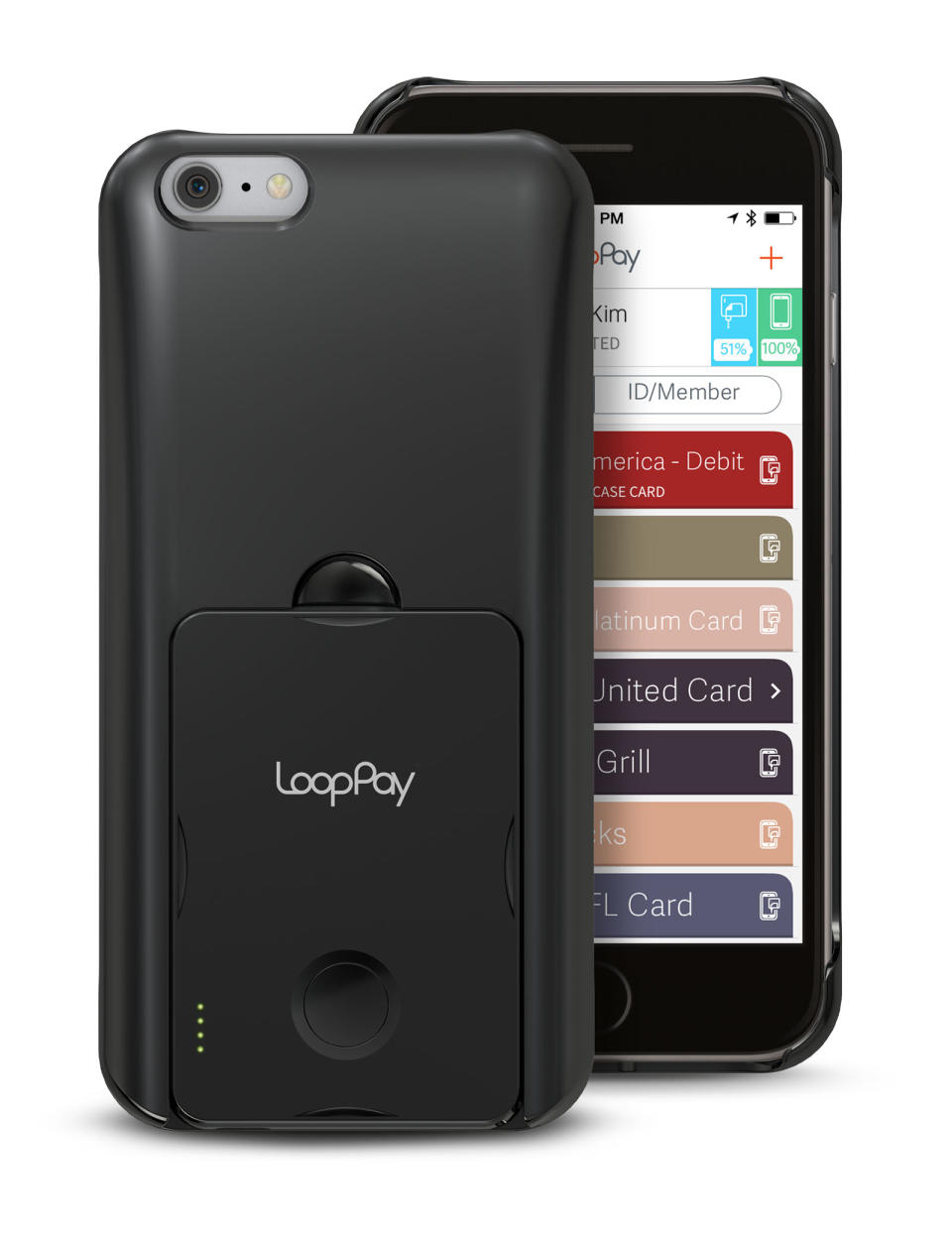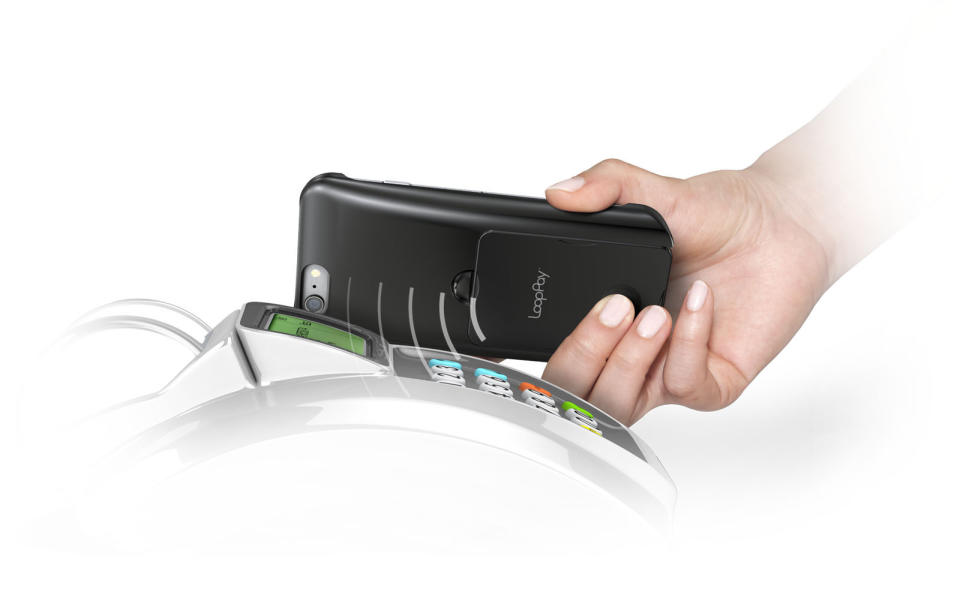LoopPay CardCase Takes On Apple Pay (Hands-on)
Sure, Apple Pay is a pretty neat, but it's still not accepted widely and can only be used for one-tap payments on the iPhone 6 and 6 Plus. Those who own an Android or iPhone 5/5s can get the same functionality with LoopPay's new $50 CardCase for iPhone 5/5s or $40 Card accessory for Android devices. LoopPay says it is working on making versions of the CardCase for specific Android devices.
I had a chance to try out the CardCase and was impressed with how easily it worked. At my local Dunkin' Donuts, I explained (very briefly) to the kind attendant at checkout that I was using a new payment device. She nonchalantly took the accessory, read the instructions on the back, held it to the card swipe portion of her terminal, and pressed the button as instructed. It all happened, like magic, in a second, and the payment went through.
MORE: Apple Pay: Where You Can (and Can't) Use It
That's the most intriguing part of LoopPay's products. They're accepted virtually anywhere, since the company's technology mimics a magnetic swipe transaction. This means that LoopPay can be accepted at the more than 10 million magnetic stripe point-of-sale (POS) terminals in the U.S. However, how smoothly it works will depend on how receptive each checkout attendant is.
It was easy enough to set up my CardCase. I just had to install the free app, create an account, turn on Bluetooth and link my card to my phone. With the accompanying card reader that plugs into the accessory, I swiped my Starbucks gift card and credit card into my device. Then, I took a picture of the front (and back for credit/debit cards) of the card and LoopPay saved that information.
Before each payment, I had to go into the app, and tap the care I wanted to use. That authorizes the Card for one transaction, and I got an alert when the payment was made.
As backup, you can also store an ID, cards and cash in the compartment in the CardCase under the slide-out Card. The device charges via microUSB and can last a few weeks on a charge.
The only things I didn't like about the CardCase were the dependence on Bluetooth (which I personally find drains the battery on my iPhone 5s despite it being Bluetooth Low Energy), and the glossy, smudge-prone plastic case.
The fact that you can slide out the card component from the case and hand it to a waiter at a restaurant means that, unlike with Apple Pay, you don't have to part with your phone. If the card gets out of Bluetooth range (100 feet or so), you'll get a notification, and your information will be wiped from the device.
There are plenty of digital payment products out there other than Apple Pay, such as Coin and Plastc. The latter two look more like physical credit cards that have re-writeable magnetic stripes so they can take on the information of several cards.
LoopPay has delivered other devices in the past that use its magswipe technology, including a $30 keychain fob and a $90 ChargeCase that integrated the fob into a battery charging bumper for the iPhone 5/5s.
Security and Future-Proofing Concerns
With any device that contains all your sensitive financial information, it pays to be careful. LoopPay has put some security measures in place, and there more on the way to help assuage your concerns. For starters, you'll need to enter a PIN (that you chose while setting up your account) to access the app whenever you open it, even if you've left it running in the background. This provides some protection against people who pick up your phone and try to look at your information.
LoopPay also says it is working on making its technology work with tokenization, which masks your credit card number by assigning a random, one-time string of bits to it during each transaction. However, that won't happen until 2015.
As anyone who's familiar with the payment industry will tell you, magnetic swipe technology is on its way out. Chip-and-pin (or chip-and-signature) systems, where a physical chip is embedded into the card and requires a PIN (or signature) input for each transaction, are expected to become more popular in the United States. The chip-and-pin method is already widely used in other parts of the world, such as Europe and Asia, and is more secure than magnetic stripes.
LoopPay also promises compatibility with that technology by next year -- regardless of whether your card uses a magstripe or EMV (chip-and-pin), LoopPay should be able to read and send its information to payment terminals.
Staff Writer Cherlynn Low needs her bank account to fatten up and her actual wallet to slim down. Follow her @cherlynnlow. Follow Tom's Guide at @tomsguide and on Facebook.
Copyright 2014 Toms Guides , a TechMediaNetwork company. All rights reserved. This material may not be published, broadcast, rewritten or redistributed.




